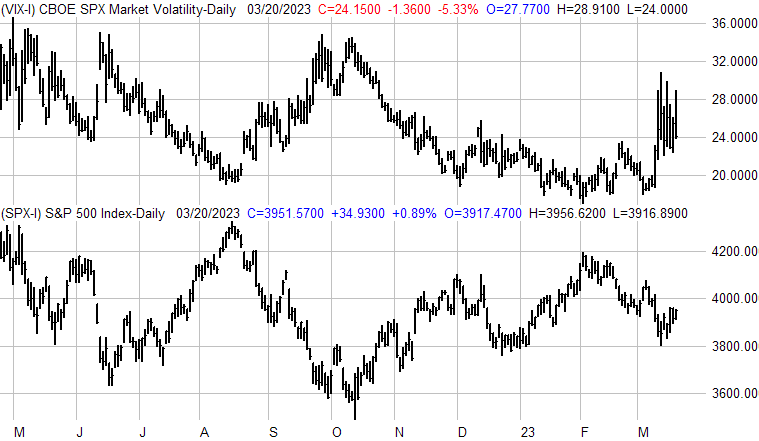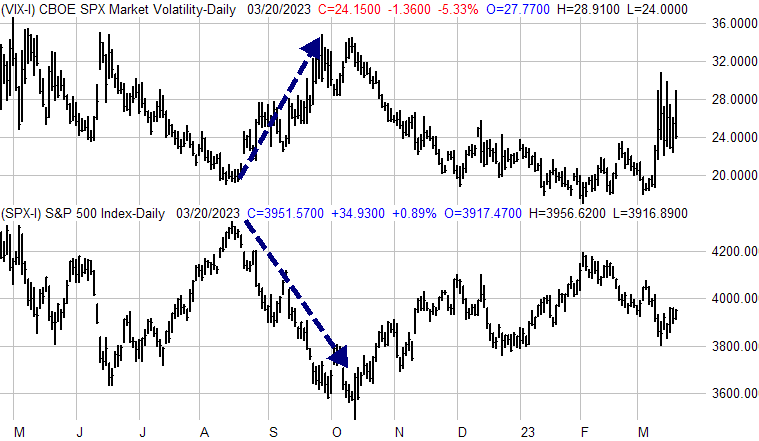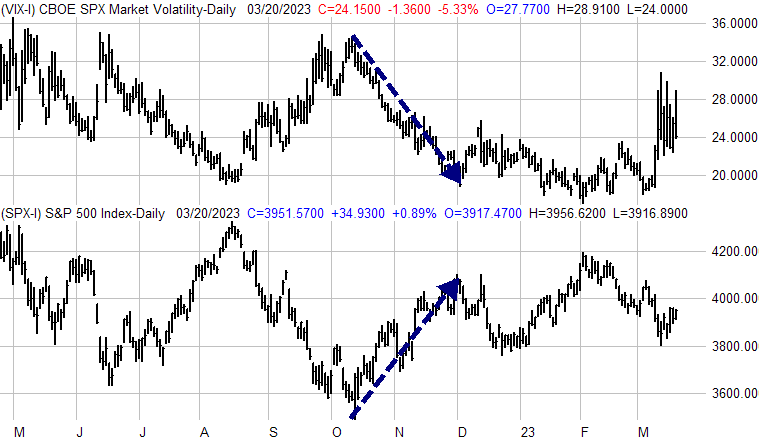The Fear Index (VIX)
The VIX index, also known as the CBOE Volatility Index, is a measure of the expected volatility of the S&P 500 index, which is one of the most widely followed stock market indices in the world. The VIX is calculated by analyzing the prices of options contracts on the S&P 500 and estimating how much the market expects the index to move up or down over the next 30 days.
The VIX is often referred to as the “fear index” because it tends to spike during times of market turmoil and uncertainty. In other words, when investors are feeling anxious or fearful about the stock market, the VIX tends to rise. This is because the VIX is a measure of the market’s expectation of volatility, which tends to increase when there is uncertainty or risk in the market. Therefore, the VIX is seen as a gauge of market sentiment and can be used by investors to gauge the level of fear or anxiety in the market.

Traders use the VIX index in a few different ways to trade the stock market. Here are a few examples:
Traders can use the VIX to hedge their positions in the stock market. When the VIX is rising, it often means that the stock market is becoming more volatile and there is more risk. Traders can buy options on the VIX to hedge their positions in the stock market, which can help to offset losses if the market starts to decline.

Trading volatility: Some traders specialize in trading volatility and use the VIX as a key indicator of market sentiment. These traders may buy or sell options on the VIX to take advantage of expected changes in market volatility.
Timing market entries and exits: Traders may also use the VIX to time their entries and exits in the stock market. For example, if the VIX is low and the market has been relatively calm, a trader may take that as a signal to enter the market because there is less risk of a sudden decline. On the other hand, if the VIX is high, a trader may wait for it to come down before entering the market, as this could be a sign that the market has stabilized.
At TheUpTrend, we follow the Trend of the VIX and trade against the current Trend. We will buy stocks when the VIX is trending down, and Sell stocks when the VIX is rising trending down.
We also look for extremes in the VIX, which can often indicate an major reversal point for the stock markets.

A rising VIX usually coincides with falling stock prices.

And a falling VIX usually coincides with a rising stock market
Overall, traders use the VIX as a tool to help them navigate the stock market by providing insight into market sentiment and volatility levels. By using the VIX in combination with other indicators and analysis, traders can make more informed decisions about when to enter and exit the market and how to manage risk.

